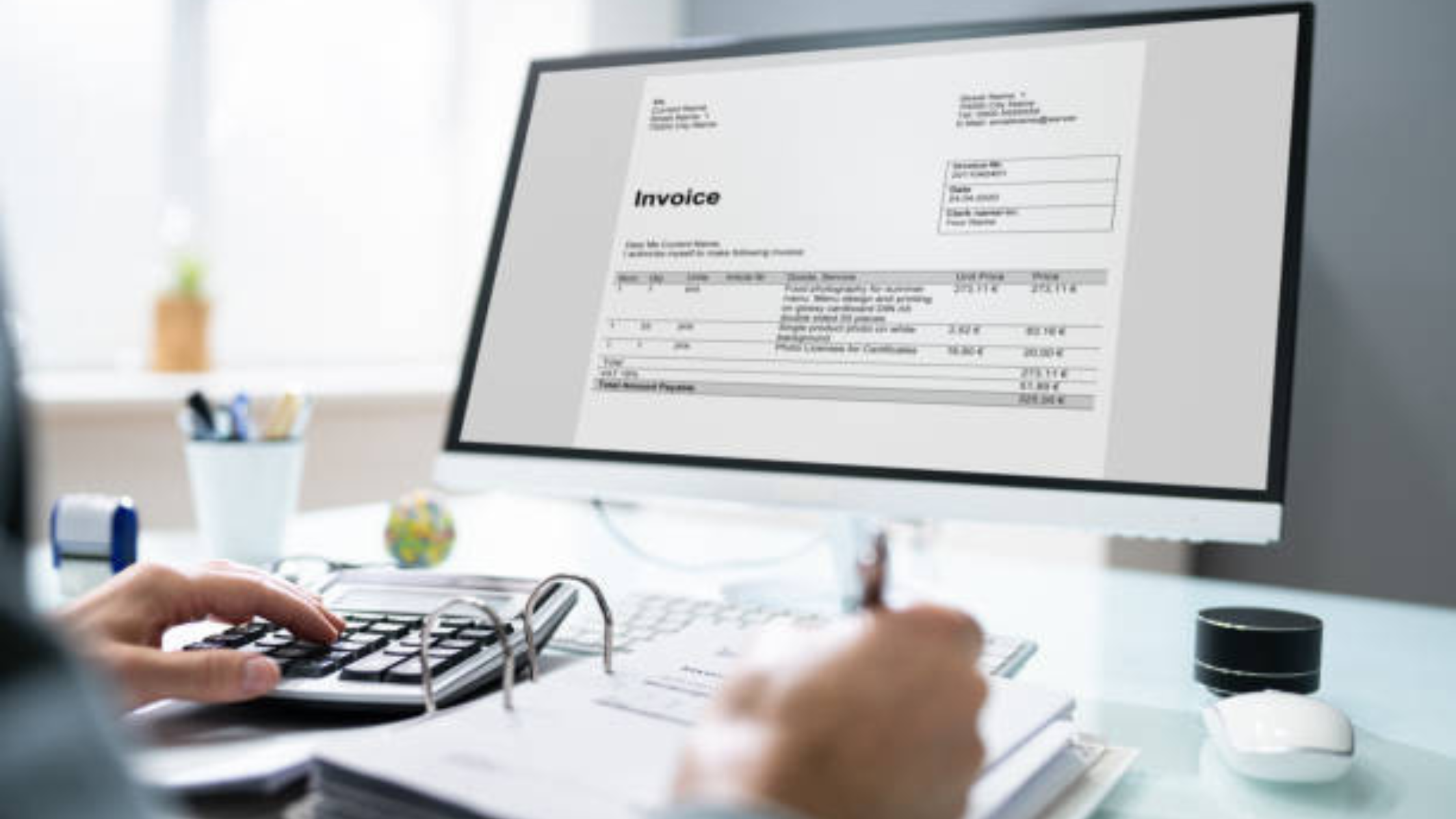Effortlessly Generate Recharge Receipts with the Click of a Button

Convenience is key. Imagine being able to generate recharge receipts with just the click of a button, saving you time and effort. This innovative solution streamlines the process, making it effortless for users to access and organize their recharge receipts efficiently. By simplifying this task, individuals can focus on more important matters without the hassle of manual paperwork. Whether you're a busy professional, a small business owner, or simply someone looking to optimize their time, this technology offers a seamless way to manage your recharge receipts. Say goodbye to the days of tedious paperwork and hello to a more efficient and productive way of handling your receipts. Join the wave of automation and experience the ease of generating recharge receipts instantly. Embrace the future of receipt management with just a simple click.
How to Use a Recharge Receipt Generator
Step 1: Accessing the Recharge Receipt Generator Tool
Using a recharge receipt generator can streamline the process of creating receipts for recharges made, whether for personal use or business transactions. To get started with the tool, the first step is to access it. This can be done by visiting the designated website or platform where the recharge receipt generator is available. Look for the section specifically dedicated to generating receipts, which is usually easily accessible from the main menu or homepage.
Step 2: Entering Necessary Details
Once you have located the recharge receipt generator tool, the next step involves entering the required details. These details typically include the recipient's name, contact information, recharge amount, date of recharge, payment method used, and any additional notes or references you wish to include on the receipt. Providing accurate information ensures that the receipt is comprehensive and serves its purpose effectively.
Step 3: Generating the Receipt with a Click
After inputting all the necessary details, the final step is to generate the receipt. This is usually a simple process of clicking on the 'Generate Receipt' button. The tool will then process the information provided and automatically generate a professional-looking receipt. Depending on the tool's features, you may have options to customize the receipt format or design before finalizing it.
Benefits of Using a Recharge Receipt Generator
Apart from the convenience it offers, using a recharge receipt generator comes with several benefits. Firstly, it helps in maintaining accurate records of recharges made, which can be useful for personal budgeting or business accounting purposes. Additionally, a well-documented receipt can serve as proof of payment in case of any disputes or discrepancies. Moreover, the professional appearance of the generated receipt reflects positively on the sender's credibility and attention to detail.
Conclusion
Utilizing a recharge receipt generator simplifies the process of creating receipts for recharges. By following the easy steps of accessing the tool, entering necessary details, and generating the receipt, users can efficiently manage their recharge transactions and maintain organized records. Whether for personal use or business needs, a recharge receipt generator is a valuable tool in enhancing financial documentation practices.
Customization Options
Providing a personalized touch to your customers can make a significant difference in how your brand is perceived. Customization options not only enhance the overall customer experience but also help in reinforcing your brand identity. Let's delve into some key customization options that businesses can explore:.
- Personalizing Receipt Details: Enhancing the Customer Experience
Tailoring receipt details such as adding customer names, purchase preferences, or personalized messages can go a long way in making customers feel valued and appreciated. By personalizing these elements, businesses can create a more engaging and memorable transaction experience for their customers. This level of customization not only adds a personal touch but also shows that the business values its customers' individuality.
- Adding Logos or Additional Information: Strengthening Brand Identity
Incorporating your company's logo or additional information on receipts can help in brand recognition and recall. It also serves as a subtle yet effective marketing tool, reinforcing your brand image in the minds of customers. Logos are powerful visual elements that can instantly connect customers to your brand. Additionally, including additional information such as contact details, social media links, or upcoming promotions can further engage customers and encourage repeat business.
- Tailored Promotions and Discounts: Driving Customer Loyalty
Customization goes beyond just the receipt; businesses can also personalize promotions and discounts based on customer preferences and purchase history. By offering tailored deals, businesses can show customers that their loyalty is valued. This personalized approach not only increases customer satisfaction but also fosters long-term relationships. Businesses can use customer data to create targeted promotions that resonate with individual preferences, increasing the likelihood of repeat purchases.
- Custom Packaging and Wrapping: Elevating Unboxing Experience
Beyond receipts, businesses can extend customization to packaging and wrapping. Unique packaging designs, personalized gift wrapping, or branded packaging materials can enhance the unboxing experience for customers. This attention to detail not only adds a touch of luxury but also creates a memorable moment for customers, increasing brand loyalty and positive word-of-mouth.
- Personalized Thank-You Notes: Building Emotional Connections
Including handwritten thank-you notes or personalized messages in packages can evoke positive emotions in customers. These small gestures show appreciation and create a sense of connection between the business and the customer. Personalized notes can leave a lasting impression, fostering a sense of loyalty and encouraging customers to share their positive experiences with others.
By leveraging these customization options, businesses can create a unique and memorable experience for their customers, fostering loyalty and long-term relationships. Embracing personalization in every aspect of the customer journey can set businesses apart in a crowded marketplace and drive sustainable growth.
Ensuring Accuracy and Security
Ensuring the accuracy and security of data is paramount for individuals and organizations alike. This blog section delves into two crucial aspects that play a significant role in safeguarding data: data encryption and protection, and verification processes.
Data Encryption: Safeguarding Sensitive Information
Data encryption serves as a cornerstone in the realm of cybersecurity, offering a robust shield against potential threats. By converting sensitive information into an unreadable format through complex algorithms, encryption ensures that even if unauthorized entities intercept the data, they cannot decipher it without the corresponding decryption key. Advanced encryption standards like AES (Advanced Encryption Standard) and RSA (Rivest-Shamir-Adleman) are widely adopted to fortify data security.
Furthermore, encryption extends beyond data at rest to data in transit, ensuring end-to-end protection. Secure communication channels, such as SSL/TLS protocols, establish encrypted connections, thwarting eavesdropping attempts and safeguarding data integrity during transmission.
Data Protection: Fortifying Digital Fortresses
Complementing encryption, data protection strategies fortify digital fortresses against cyber incursions. Robust data protection encompasses a holistic approach, encompassing access controls, intrusion detection systems, and regular security audits. By erecting virtual barriers through firewalls and implementing stringent access controls, organizations fortify their data citadels against unauthorized intrusions.
Verification Processes: Upholding Data Integrity
Verification processes serve as the custodians of data integrity, ensuring the accuracy and authenticity of information. Multi-factor authentication mechanisms, including biometric identifiers and one-time passcodes, bolster user verification, mitigating identity theft risks. Digital signatures, backed by cryptographic keys, validate the origin and integrity of digital documents, fostering trust in electronic transactions.
The Evolving Landscape of Cybersecurity
As technology advances, so do the tactics employed by cybercriminals. It is imperative for individuals and organizations to stay abreast of the latest cybersecurity trends and threats. Continuous education and training on cybersecurity best practices are essential to build a vigilant defense against evolving risks.
Moreover, the rise of cloud computing and IoT (Internet of Things) devices introduces new challenges to data security. Securing interconnected devices and cloud-based services requires a comprehensive approach that integrates encryption, access controls, and real-time monitoring to detect and mitigate potential vulnerabilities.
Ethical Considerations in Data Security
Beyond technical measures, ethical considerations play a pivotal role in data security. Respecting user privacy, adhering to data protection regulations such as GDPR (General Data Protection Regulation), and promoting transparency in data handling practices are fundamental principles that underpin a trustworthy digital ecosystem.
The synergy of data encryption, protection measures, and verification processes forms an impregnable bulwark against cyber threats. By embracing these pillars of cybersecurity, individuals and organizations can navigate the digital landscape with confidence, safeguarding their invaluable data assets from malevolent forces.
Integration with Payment Systems
Seamless integration with payment platforms is no longer just a convenience but a necessity for businesses looking to thrive in the online marketplace. Let's explore the significance of this integration and how it can revolutionize the way businesses handle transactions.
Enhanced Customer Experience Through Seamless Integration
A seamless integration with payment platforms such as PayPal, Stripe, or Square can significantly enhance the overall customer experience. By offering multiple payment options and ensuring a smooth checkout process, businesses can cater to a wider audience and reduce cart abandonment rates. Let's delve into the various benefits of providing customers with a hassle-free payment experience.
Automated Receipt Generation Upon Successful Transactions
One of the most valuable features of integrating with payment systems is the ability to generate automated receipts instantly after a successful transaction. These receipts not only serve as proof of purchase for customers but also streamline the accounting process for businesses. Let's discuss how automated receipt generation can improve transparency and efficiency in financial record-keeping.
Secure Payment Processing and Fraud Prevention
Integrating with reputable payment platforms also ensures secure payment processing and fraud prevention measures. With built-in security features such as encryption and fraud detection, businesses can safeguard sensitive customer information and prevent unauthorized transactions. Let's explore the importance of prioritizing payment security and how it can build trust with customers.
Real-time Transaction Monitoring and Reporting
Another advantage of integrating with payment systems is the ability to monitor transactions in real-time and generate detailed reports for analysis. By gaining insights into sales trends, customer behavior, and revenue streams, businesses can make informed decisions to optimize their payment processes and drive growth. Let's examine the significance of real-time transaction monitoring in improving financial management practices.
Expanding Global Reach Through Payment Integration
Beyond enhancing customer experience and ensuring secure transactions, integrating with payment systems can also help businesses expand their global reach. By accepting various currencies and payment methods, businesses can attract international customers and tap into new markets. Let's explore how payment integration can break down barriers to international sales and facilitate cross-border transactions.
Personalized Payment Solutions for Diverse Customer Needs
Moreover, integrating with payment platforms allows businesses to offer personalized payment solutions tailored to diverse customer needs. Whether it's subscription-based services, installment plans, or one-click payments, businesses can cater to individual preferences and enhance customer satisfaction. Let's discuss the importance of flexibility in payment options and how it can drive customer loyalty and retention.
Innovative Payment Technologies and Future Trends
As technology continues to evolve, businesses must stay abreast of innovative payment technologies and future trends in the payment industry. From mobile wallets and contactless payments to blockchain and cryptocurrency, businesses need to adapt to changing consumer preferences and embrace emerging payment solutions. Let's explore the latest advancements in payment technology and how businesses can leverage these innovations to stay competitive and meet evolving customer demands.
Integrating with payment systems offers a myriad of benefits for businesses seeking to streamline their payment processes, enhance customer satisfaction, and ensure secure transactions. By embracing the latest payment technologies and best practices, businesses can stay ahead of the competition and deliver a seamless payment experience that fosters long-term customer loyalty.
Conclusion
The convenience and efficiency of generating recharge receipts with just the click of a button not only saves time but also enhances the overall user experience. This streamlined process eliminates the need for manual entry and reduces the margin for error, making it a valuable tool for businesses and individuals alike. Embracing technology to simplify tasks like generating recharge receipts is a step towards a more productive and organized workflow.







